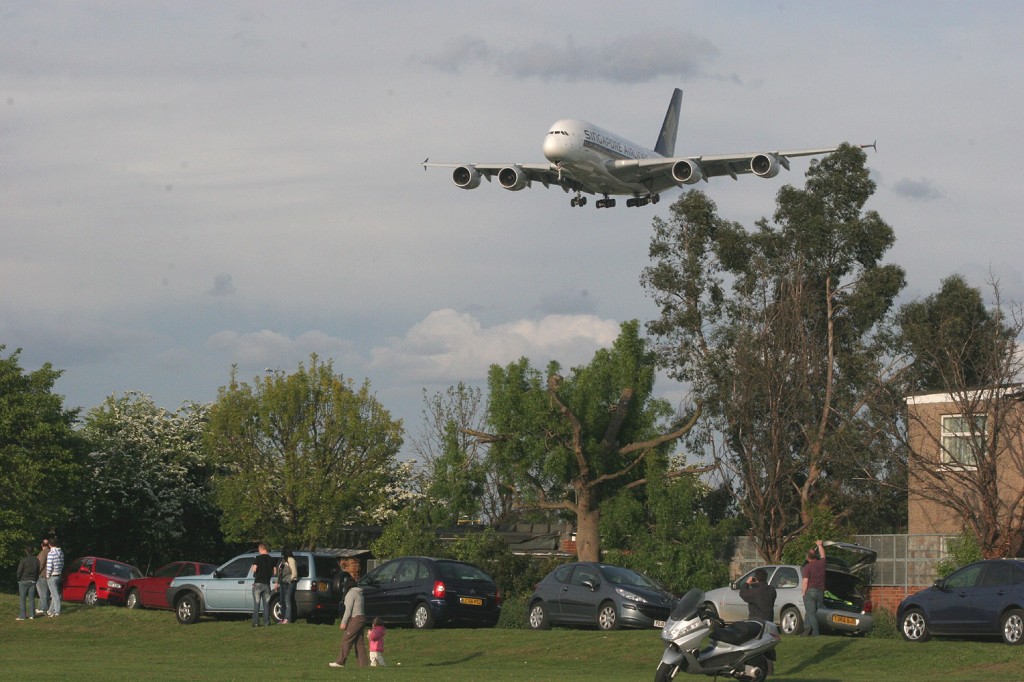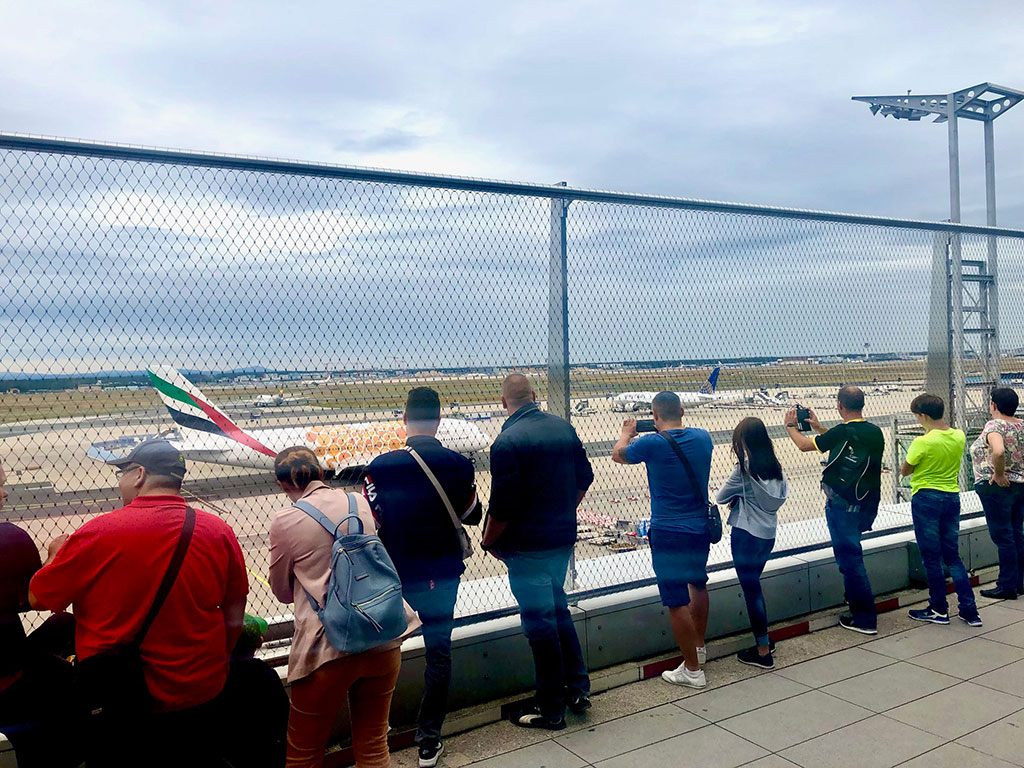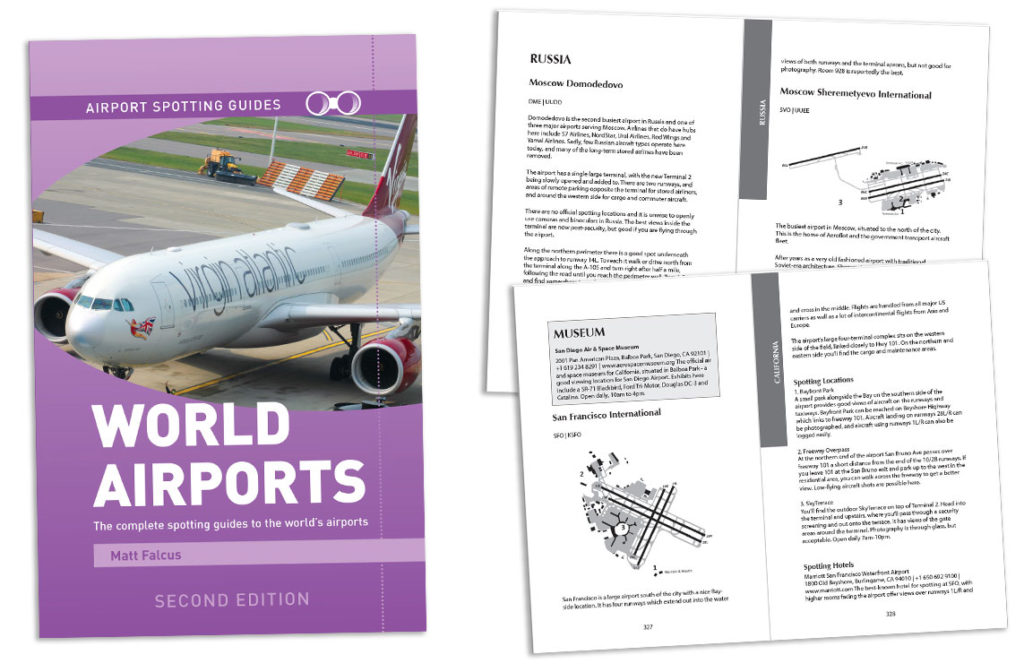As any plane spotter knows, there’s a lot of stigma around the hobby. Most people don’t understand why you’d want to hang around airports noting down registrations and tail numbers, or taking photographs of aircraft.
Similarly, many airports and their security personnel are also suspicious of this activity, and it a lot of places plane spotting is not encouraged.
However, in days gone by it was common to see viewing areas at most of the world’s major airports for watching the aircraft, and on the face of it I think most people realise that plane spotting is a completely harmless hobby.
In fact, many airports recognise the goodwill they can generate by providing facilities for spotters today, and in engaging their local spotting community which can become unofficial ambassadors for them, and the eyes and ears keeping a watch out for unusual activity.
In this guide we’ll look at some of the common questions, and where plane spotters need to be careful when pursuing their hobby.
Is Plane Spotting Illegal?

Broadly speaking, no.
It would be difficult for any law enforcement to stop people looking at and taking an interest in aircraft flying overhead or in and out of airports.
Even in countries like the United Arab Emirates, it is not against the law to spot planes.
Mobile phone apps today let us find out the identity of most aircraft that we see, as well as much more information about them, and this kind of information is publicly available and even enjoyed by people who are not plane spotters.
And as any spotter will know, there would be little you could do to threaten the safety or security of an aircraft simply by noting down its registration or taking a picture of it.
However, the traditional view is that this kind of activity is seen as suspicious and a threat. And in this day and age, the safety and security of passengers and aircraft has never been at a greater threat, so it’s perfectly understandable to see where authorities are coming from in their attitude towards the hobby.
Complications Around Military Aircraft and Facilities
Most of the problems that plane spotting raises surround military aircraft and airfields.
By nature, these operations are engaged in providing defence to a country and, whilst they may be on view to the public, they do not want people with telephoto lenses taking detailed pictures of them, or making notes on their movements.
Most of the cases I’ve heard about plane spotters getting into trouble come from military facilities and not civilian airports. However, that is not universally the case, with spotters in India arrested in recent memory for spotting at Delhi Airport from their hotel room.
Are There Any Countries Where Plane Spotting IS Illegal?
As stated above, it is impossible to arrest someone for simply taking an interest in an aircraft, or using a smartphone app or website to identify it.
However, in many countries it is illegal to take pictures of aircraft, airports or military facilities.
By nature, anyone hanging around airports pointing binoculars or taking notes will also be lumped into the same category, and suspicions are often aroused.
At best, people doing this will simply be asked to move on.
Often you’ll be asked to delete and pictures you’ve taken.
At worst, you’ll be taken into custody for questioning and possible charges.
It is very important to be respectful of the laws in the country you are planning to go plane spotting in.
The following countries are known to be particularly hostile to plane spotting, but may or may not consider it to be illegal:
- Greece (military aircraft)
- India
- Iran
- North Korea
- Pakistan
- Saudi Arabia
- Singapore (military aircraft)
- United Arab Emirates
Most African nations also officially ban aircraft photography.
In the examples above, there are many cases where advanced permission or organised tours has permitted spotting.
I would also add that in ANY country, spotting at military airfields should not be attempted unless using an official spotting area, or contacting for permission beforehand.
What If I Get Trouble in a Place Where spotting is Not Usually a Problem?
Again, lots of people express suspicion around the idea of plane spotting, and often security personnel will ask you what you are doing even in a place where plane spotting is not illegal. They will often ask you to stop, or move on.
It’s important to know your rights in these cases. Being asked to delete pictures is not something you always have to do.
However, remember that in many cases you are on private property and must obey the rules of the operators.
It’s best to have a calm discussion with anyone who reprimands you while plane spotting, explain what you are doing, why (not always easy!), and listen to their requests. Becoming aggressive will not help your case!
Let Officials Know What You’re Doing

Many airports are tolerant to plane spotters, but would prefer to know you are doing it. This is particularly the case in America.
A call to the airport’s police department (or try the information desk) to let them know that you plan on spending time in a particular location taking tail numbers or photographs, is usually enough to satisfy them that you are not suspicious when they spot you on CCTV cameras.
You don’t need to do this if you’re using an official spotting location provided by the airport for that purpose.
Conclusion

Regardless of local laws, I think it’s important as a plane spotter to always understand that this is a hobby that not everyone understands, and many people are nervous about suspicious activity around aircraft and airports.
So with that in mind, it’s wise to always be discrete about plane spotting unless you’re in an official location like a viewing area.
It’s also important that you familiarise yourself with the rules in the country or location you’re visiting, and remember that the rules are there for the safety of passengers.
However, as I’ve mentioned, taking an interest in aircraft and using an app to identify it, or a quick smartphone photograph – especially when many travellers will be doing this anyway – is usually acceptable wherever you are.
In many places you won’t have any trouble at all, and many airports provide places for spotters. It’s best to use these where possible.
Remember also to respect boundaries and do not trespass on private property or in secure areas.
Where to Go Plane Spotting
Our experience in plane spotting around the world and keeping on top of what other spotters are doing and encountering has put us in a unique position to put together our flagship guide book for plane spotters.
World Airports Spotting Guides lists over 400 airports around the world, covering many countries. It tells you the best places to go spotting, with directions, and handy tips on what security and laws are, and where the official spotting locations are.
If you want to know more about where to go plane spotting, why not order your copy today?
Have you had a bad experience plane spotting in a particular location? Why not leave details in the comments below to help other spotters out…









7 comments
In 2019 we were in Kefalonia, staying in Svoronata, adjacent to the airport. The road ran right along the perimeter fence and whist 99% of movements are Europen airlines, there were two Mil- 26 helis right by the fence surrounded by armed guards. I wasn’t daft enough to attempt a photo but did pull over and walked to the fence where one of the guards told me in no uncertain terms that ” you can’t look at the helicopters”. They were on a delivery hop to the Algerian AF and were spotted the following day in Malta. Maybe it’s because they were military? Probably, I’ve spotted all over Greece at various airports and never had any issues.
A policewoman approached me and told me that I couldn’t take photos at Riga airport last year but nobody seemed interested once I was in the airside terminal. Security also stopped me in Zagreb a number of years ago and more recently in Rome Ciampino.
This is not so much a comment as a question. This is an excellent guide to the legality of aircraft spotting but what about listing in on aircraft radio frequencies? I have a new radio which has air band on it and I can listen to aircraft flying nearby and to airport tower frequencies. I have heard that technically this is illegal but not much can be done about it. The real issue would be if you re-broadcast what you’re listening to.
I’d be int in anyone’s views.
Great point and question Steve. Yes, listening in on airband frequencies is technically illegal in many countries, but airband scanners are readily available without any licence or background checks. You can also easily listen in to live ATC on the internet.
Having spotted for almost 50 years now, some aspects have made our interest easier more sophisticated and enjoyable. E.g. We now have predominantly FR24 as the go to app for checking inbound flights, aircraft passing overhead and ground movements. Equally some of the more upper end DSLR cameras have the potential to take a shot and once back at home on a PC enlarge it to check registrations or other information the user is looking for. Even if you are not in close proximity to the airport perimeter but are able to see arrivals and departures from a distance, this is no longer the challenge it used to be where we relied on spotter groups who lived locally to update any movements. As Matt has made clear for us discretion is still very much recommended even in western countries and if its possible to pre-empt your spotting visit by contacting some form of security provider at the airport explaining your intentions. Often once they get passed the puzzled look you may well get on ok. As to the use of airband radios etc. that’s a different story. Unless you use an earpiece and keep radio out of sight this can create a more challenging situation. While its not always realistic to publicise any contact authorities so we can write to them ahead of time explaining why we would come from wherever to their city and spend most of the time at the airport! Again the puzzled look is amusing at times to see! The Books available for us giving spotting locations, hotels etc are a valuable asset, again a far cry from many years ago. So Matt a Big thank you for keeping us all updated and feeding our enthusiasm in this “weird” hobby we all get great pleasure from.
Twice now, over the last couple of years, at LHR, standing on the pavement, by the Eastern Perimeter road, when planes landing on 27R,around near the BA compound crash gate, I have been asked by a private security company, to go and stand on the grass area, on the other side of the road. Asked why, the reply was , there is a private area, which the path is inside, so no loitering is allowed, but it is ok to walk and cycle along!!!
Thanks for the comment Dean. I’ve also had a similar experience there – told that I must stand 1m from the fence. Quite what difference that distance makes I don’t know!
Matt